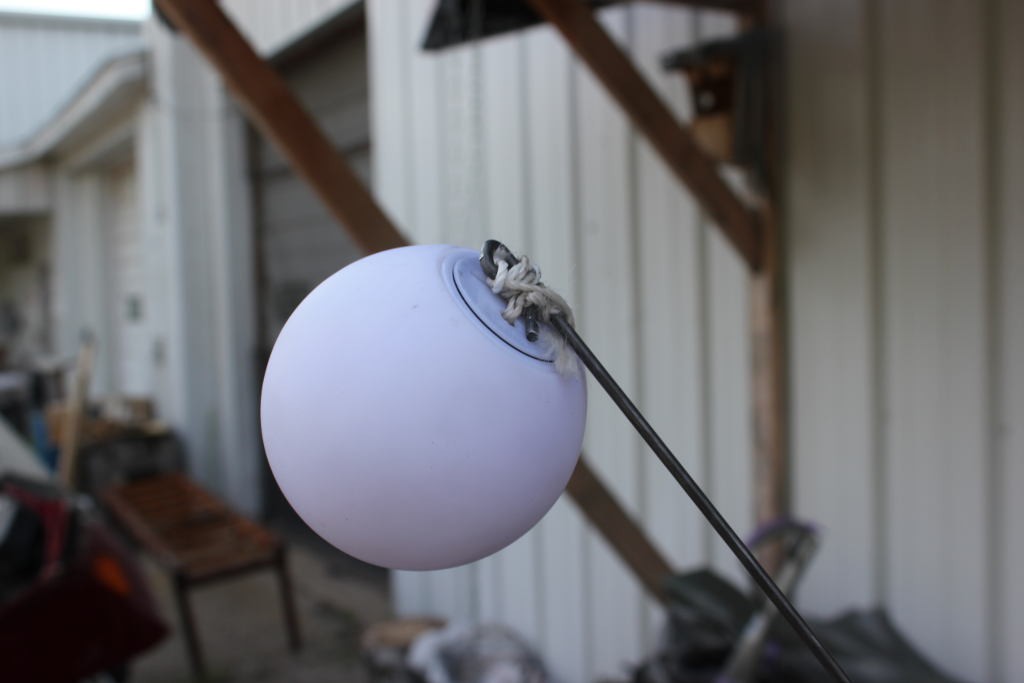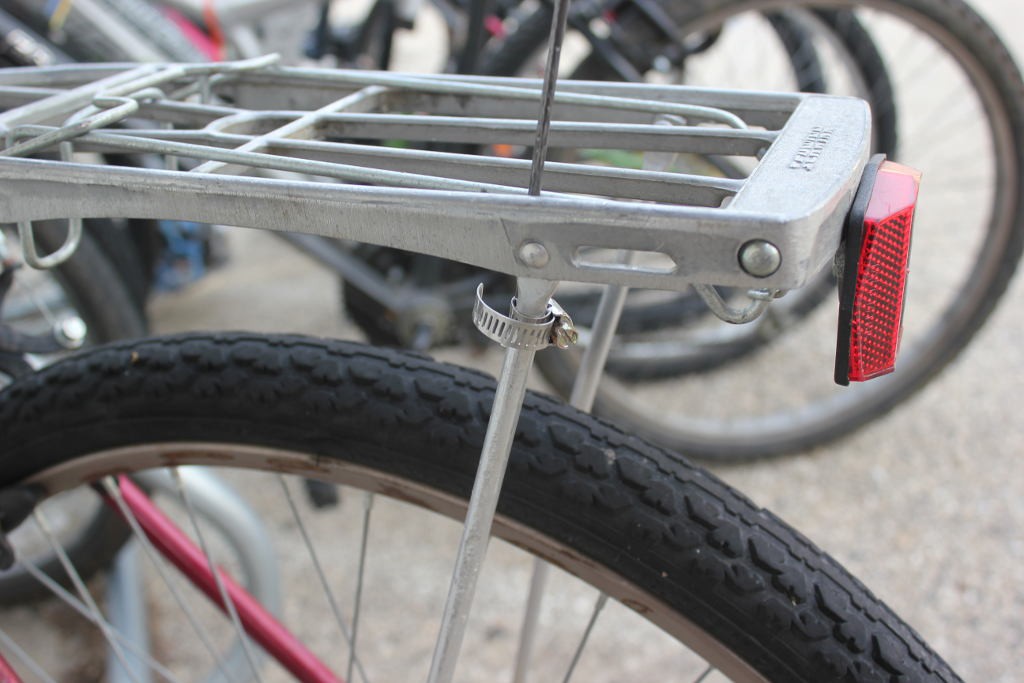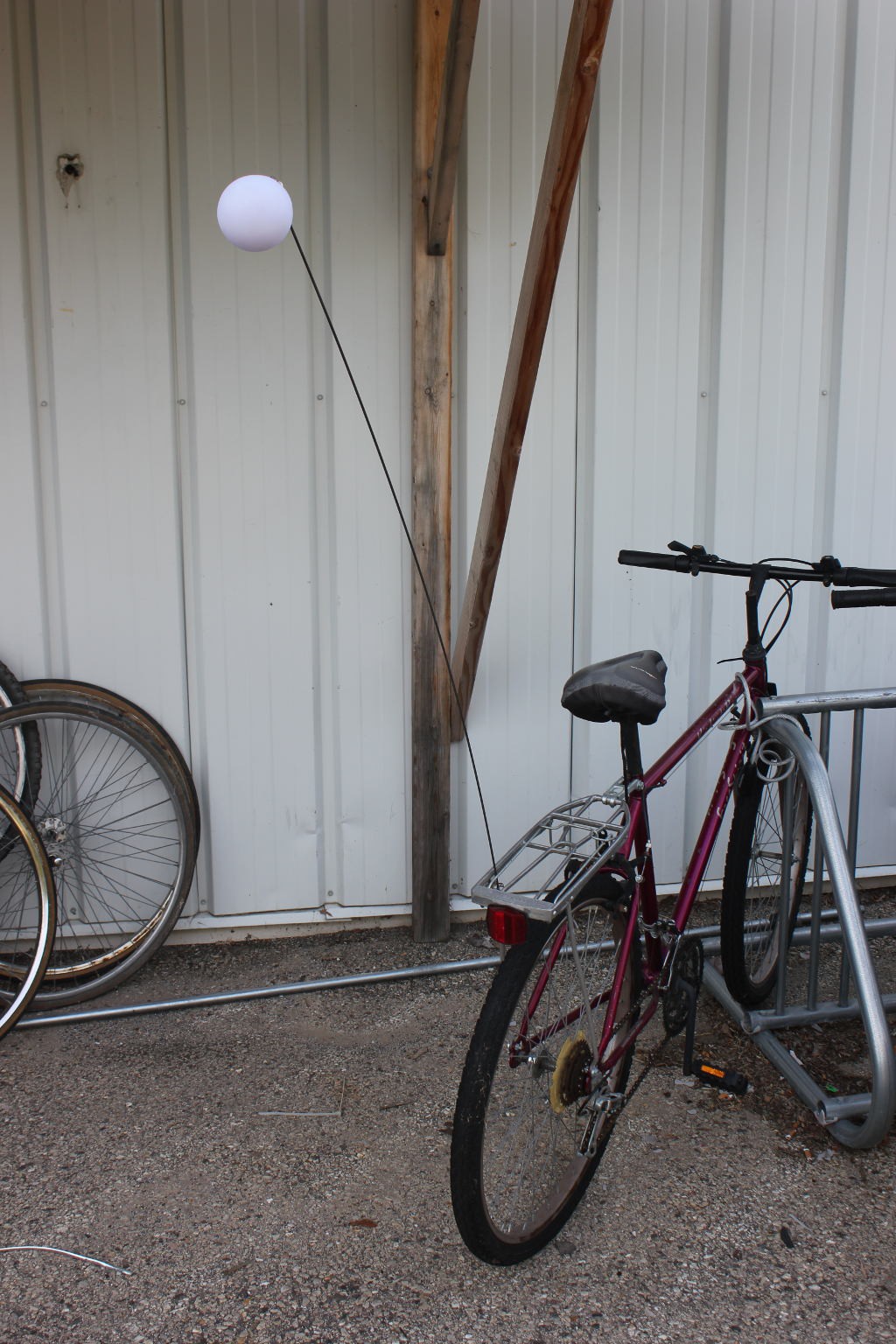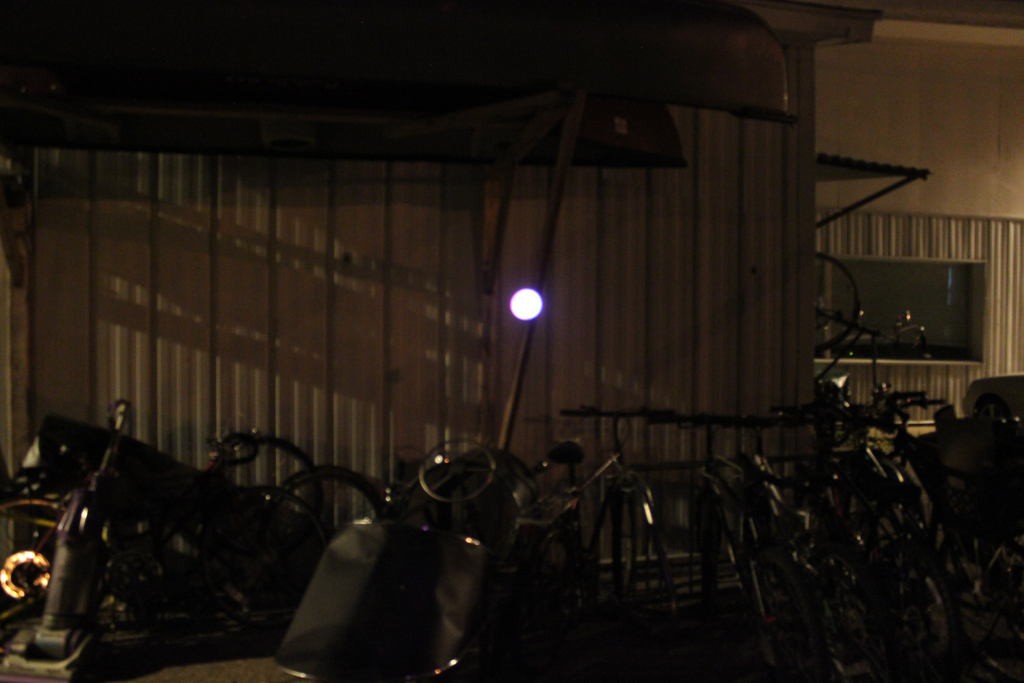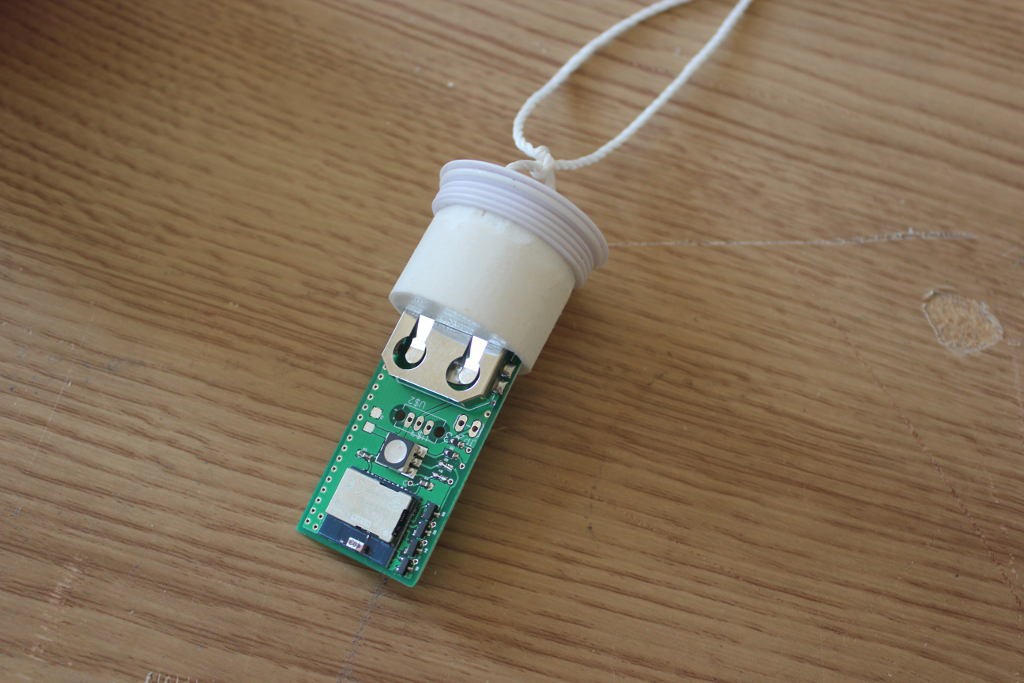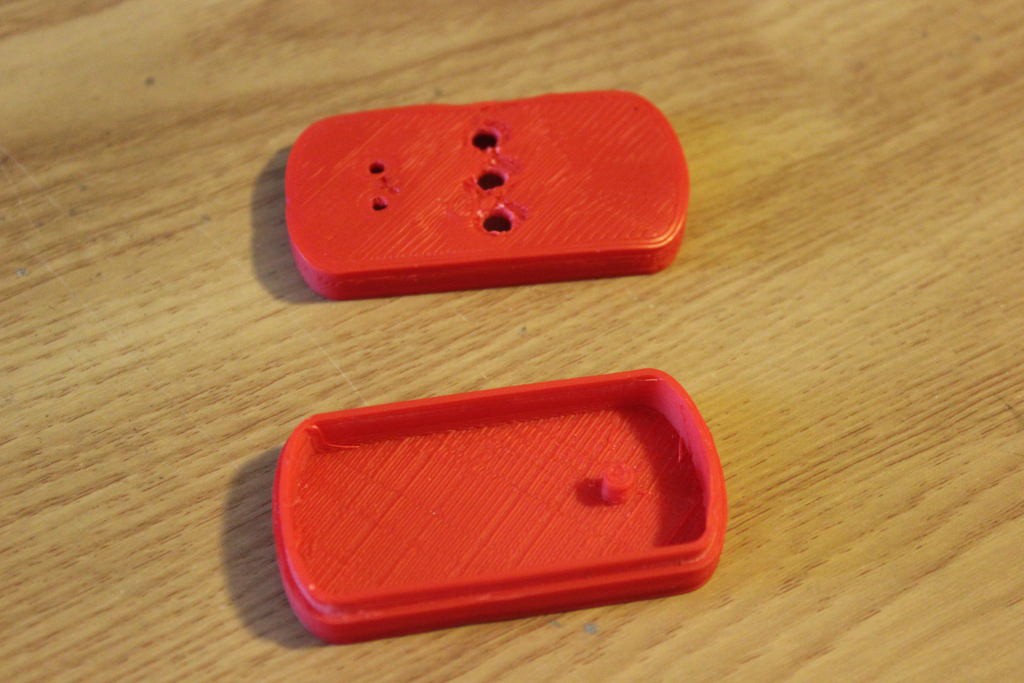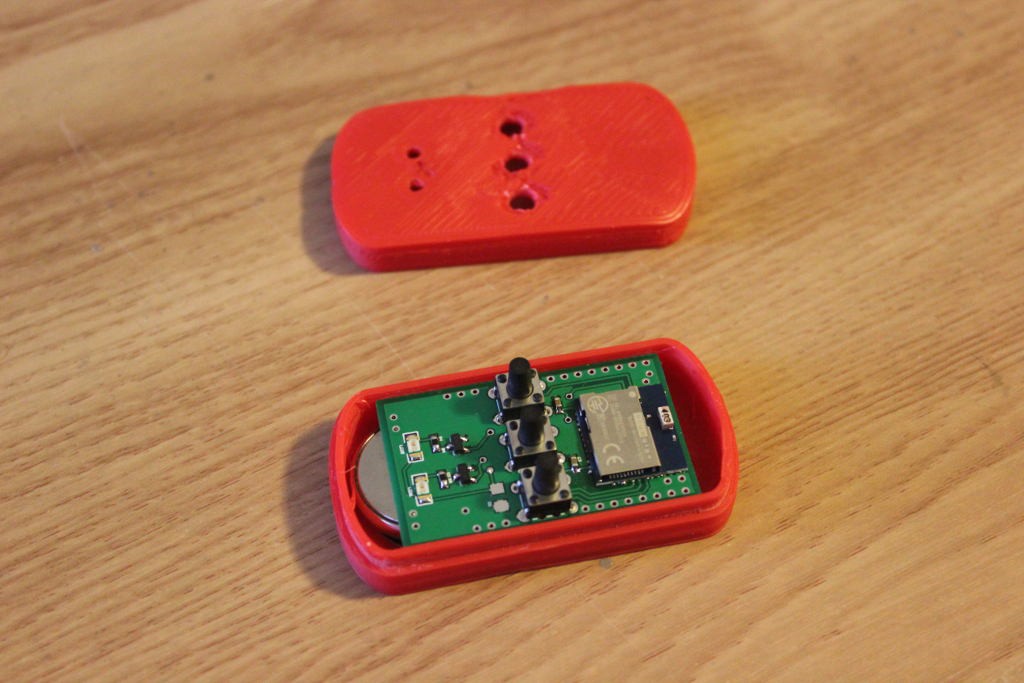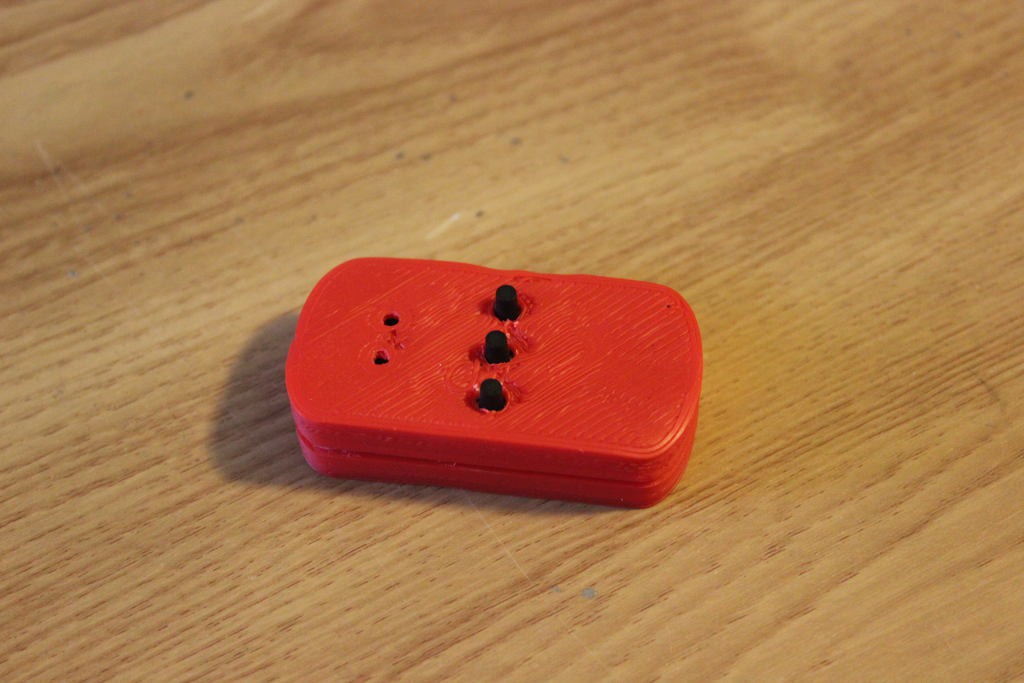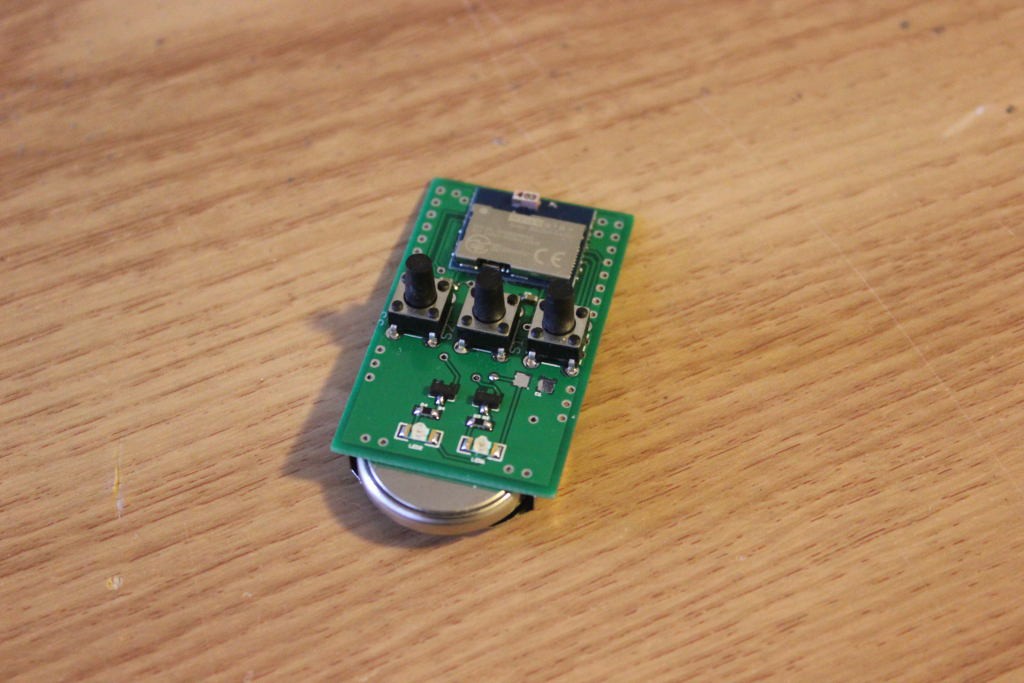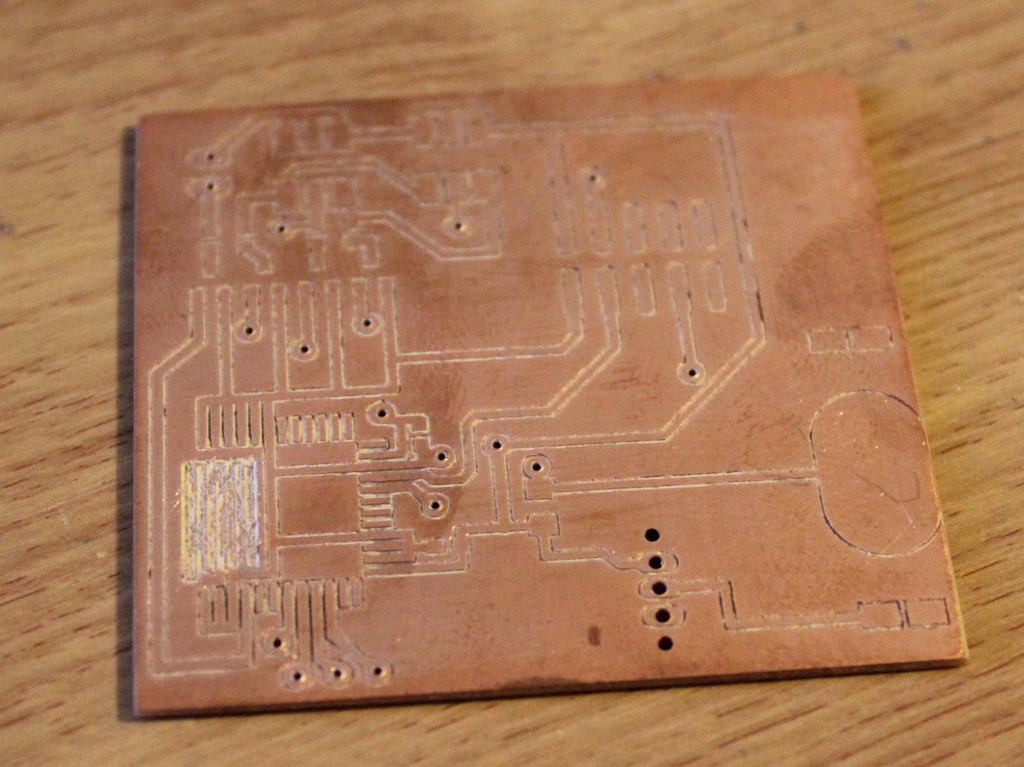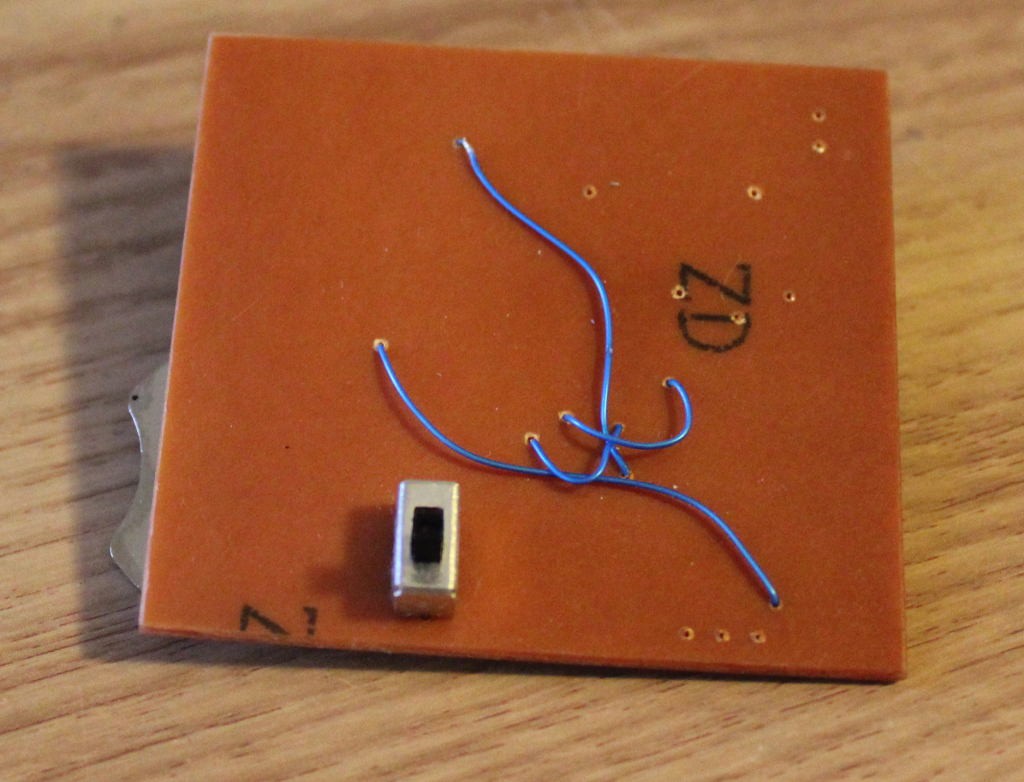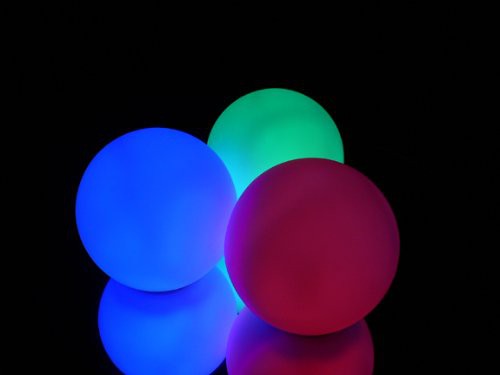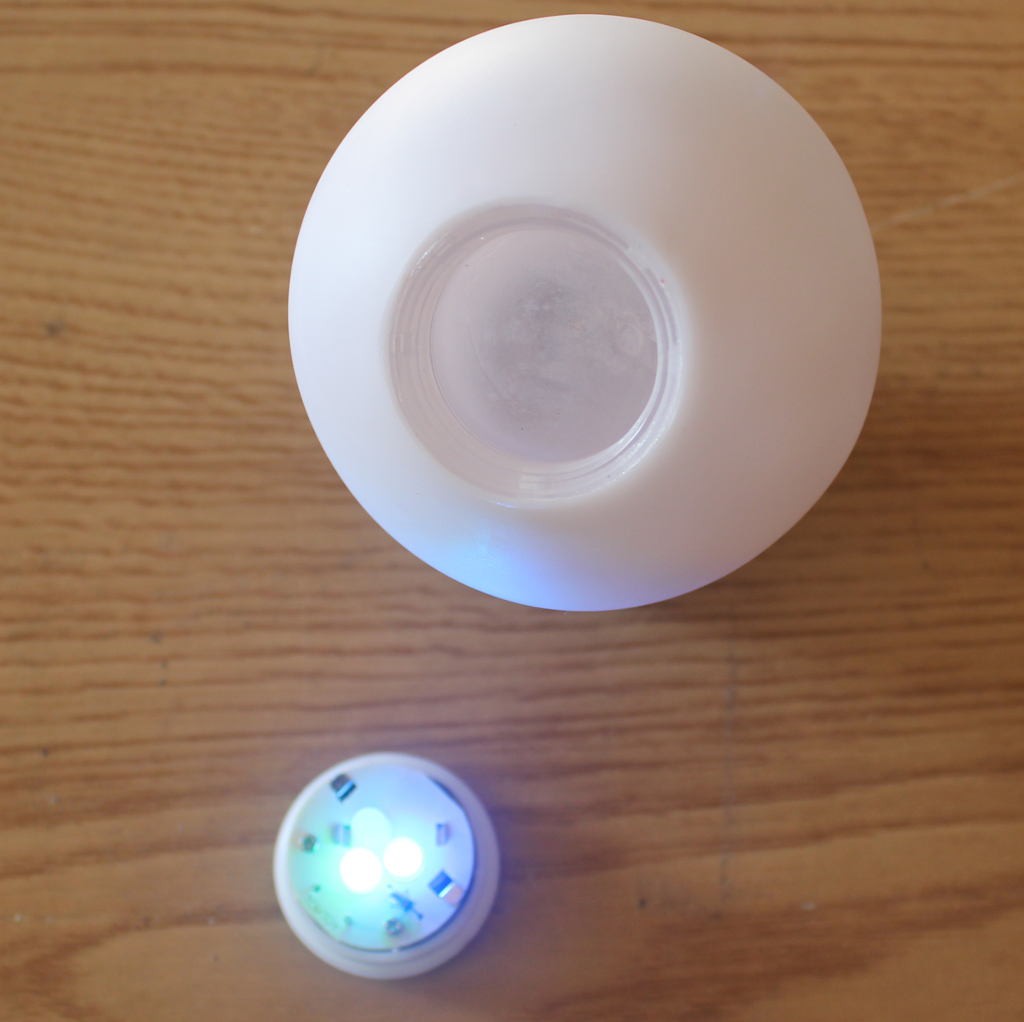-
Results from Burning Man
09/11/2015 at 14:20 • 0 commentsFirst, if you're expecting pics, I'm sorry to disappoint. For the week of Burning Man I put my camera away and didn't take more than a couple pictures. It honestly slipped my mind to take photos of Anglerfish being used in its intended environment.
We did use it, though. Well, sorta. The first night we used it as designed. We parked our bikes, took our remotes with us, and when we got back we turned them on so we could find them.
The truth is, we knew where they were all the time, and the range wouldn't be good enough if we didn't know where they were, and even if the range was good enough the light can't be seen from much further than the range is already, so further range wouldn't help much. Maybe an indicator on the remote that got brighter as you got closer so you could play hot/cold until you found it...
After the first night we just turned it on and left it on the whole time until we got home that night. We needed to have lights on while we were biking around anyway, and it was nice to be at a bar or camp and be able to glance over at the bike racks and see our globes blinking.
In the end, we would have been better off not adding the wireless component and just using the $5 blinky balls as is, so you could turn it on and off and that's it.
It was a good experiment, and I don't regret it, but it didn't do so well when it met with the real world. That's what happens with product ideas sometimes. Oh well.
-
Current Status - 2015/08/17
08/17/2015 at 13:48 • 0 commentsThis project is currently at Working Prototype status. The firmware works, the electronics work, the mechanicals work, and in practice it works. There are still a lot of things necessary to turn this from a project to a product. A lot of refinement and cleaning to make the parts easier to assemble, more robust (especially the transmitter), and making it easier to install.
Here's a video of the status, plus it working in a practical situation. Woo! There won't be any additional development until after Burning Man, when I can learn from it in a real environment and figure out what needs to be refined.
-
Installation
08/17/2015 at 13:39 • 0 commentsIn the last log, we had the firmware working. Previously we had the mechanicals and the electronics done. Now it's time to install!
I'm still not sure how this will be permanently affixed to a bike. I'm thinking it probably will need to come apart (the bike has to fit in my car for the trip to Burning Man, and the tall floppy thing won't work). The sphere has to be stuck to the pole, and the pole has to be stuck to the bike.
I purchased a steel rod from the raw stock section of the hardware store for a couple bucks. Then I bent the end into a hook and tied the sphere to it. I'll tie it better later, and probably soak it in glue so that it can't go anywhere. A long term solution is warranted, but for a one-off, this is fine for now.
As for the other end, I used a hose clamp. The nice thing about this option is that it's easy to take on and off, and when tightened I could lift the bike by the rod.
Here's what it looks like installed:
At night:
Of course, here you know where you're looking, and there aren't that many bikes. Where it'll really shine (get it?) is out in the desert or outside a big club or party, where you'll be able to easily pick your bike out of a sea of bikes.
-
Firmware
08/17/2015 at 13:30 • 0 commentsNo sexy pictures here because code isn't sexy to look at. However, I can throw in a demo video of the firmware working. The firmware now works for both the transmitter and the receiver.
The neat thing about the receiver globe is it uses the standard FindMe profile, which means that it appears like many other FindMe devices (StickNFind, Tile, Tod, the list goes on), and so it should work with all their apps, too. It is easy to connect from a smartphone or tablet, so you don't really need the remote unless your phone's range isn't very good.
What you're seeing is the receiver is beaconing every 5 seconds (to save battery), and in low power all the rest of the time. You can connect to it and set it to blink or not. You can also change the blink speed and pattern.
The transmitter starts scanning (expensive for battery life, so you have to wake the device to initiate that), finds and connects to the globe, and tells it what alert state to be in. There's a hidden key combination to put it into config mode, which allows you to connect to it from a smartphone and configure the MAC address of the globe. That way the remote is only paired to its own globe.
-
Mechanicals
08/17/2015 at 13:05 • 0 commentsNow that I had working electronics, I needed to handle the mechanical aspects. The receiver/globe was fairly straight forward. I had to remove the original electronics. Then I had to design a 3D printed part that would connect to the plug part and hold my circuit board in place. I designed and printed this in relatively short order, and the electronics press fits in perfectly. There was a strange dome inside the globe that prevented the electronics from going all the way in the enclosure, so I had to dremel that out.
Slick, eh? It uses the same seal and screw, so it's still waterproof. I had to drill a couple holes in the bottom of the plug to fit a rope I could attach to a pole, but the seal should still be good.
For the transmitter, I didn't have a ready enclosure, so I designed and 3D printed my own. To attach the two halves I went with an outer and inner lip that press fit together. This way I can still pull it apart to change the battery.
This is a little odd for a design; the LEDs are on one side of the switch and the module is on the other. This is ergonomically dumb because you would then hold it so the LEDs point up, which means your hand is wrapped right around the antenna, significantly reducing the range. I need to fix that.
With the mechanicals for the two parts done, there are two things left: firmware, and installation.
-
New PCBs
08/17/2015 at 12:57 • 0 commentsThe engraved PCB was a bust, and the only way to move forward was to bite the bullet and design and order some real PCBs. I triple checked my design and ordered them from China; a company I've been using for a long time called http://smart-prototyping.com. For $10 plus shipping I got 10 PCBs. I didn't bother panelizing to get more for the same price because I only intend to make a few of them. I ordered both a transmitter PCB and a receiver. Why a transmitter? Because the range is better with two of these modules, and because I don't want to have my phone on my at Burning Man. There's no point.
The PCBs arrived a few weeks later, so I quickly populated them and was happy to discover that they did indeed work.
The transmitter:
And the receiver:
On the back I put another LED so there wouldn't be shadows inside the globe. Also notice the programming header.
Yay! Working electronics! Huge relief. It turned out that there was an error on the PCB. The battery ground wasn't connected to the ground on the PCB for the transmitter. This was a simple problem to discover and fix with a single wire. For the next revision I'll have that fixed.Also, it was a relief that the device fits into the globe, and that when it's on it lights it up pretty well.
Next up, getting the firmware right, and handling the mechanicals.
-
Initial prototyping
08/17/2015 at 12:49 • 0 commentsBecause the device needs to have as long a range as possible, I wanted to play with the BLE121LR, a Bluetooth Low Energy module from BlueGiga which boasts 200m range (though I've never gotten it that far). I'd used it once before, but wanted to try again. For the first prototype, I tried an engraved PCB. Unfortunately, this module has pads on the bottom instead of castellations, so it was essentially impossible to solder it properly on the single sided board. I couldn't ever get it to program. Bummer. So this was a failure. I did get to play with a couple RGB LEDs to pick the one that I liked the most.
After populating:
The back. It's painful doing single sided boards where you have to do airwires.
The other part was finding an enclosure. I wanted something waterproof (to keep rain and dust out), that glows, and would be fairly sturdy. I found these blinkies on Amazon (http://smile.amazon.com/gp/product/B005XOUPS0)
After taking them apart:![]()
Perfect! I can use these! -
I'm going to Burning Man!
08/17/2015 at 12:31 • 0 commentsIt's official. The tickets are in hand. One of the problems I've read about is finding your bicycle at night. This can be a real challenge, especially in the clubs where hundreds of bicycles may be piled, and people aren't in a state to find their own. Another problem is someone called a darkwad; a person who travels at night with no lighting. They are dangerous and often the cause of night time accidents.
To solve these problems, I wanted to play with a project for fun. Something that could be used to help people find their bike, and to stay illuminated at night. And so began this product development journey.
Anglerfish for Bikes
It's dark, you're out late, and can't find your bike. Press the button on your phone or remote and the bike lights up and lures you back.
 Bob Baddeley
Bob Baddeley